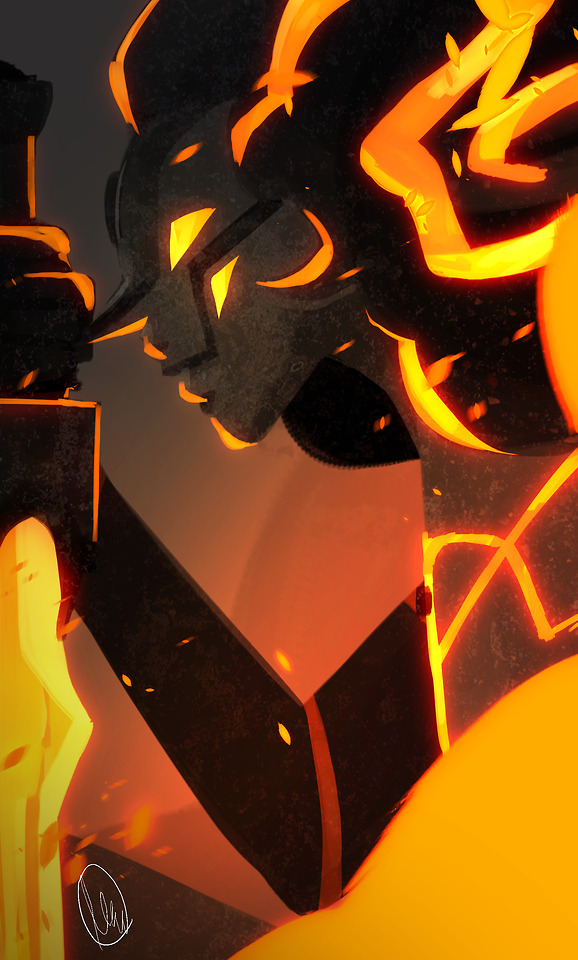I guess this blog is going to have original posts about volcanoes now instead of just reposts, because Tumblr only ever posts the same ten volcanoes (Kilauea, Mauna Loa, Krakatoa, Vesuvius, Stromboli, Etna, Mt. St. Helens, Erta Ale, Fuji, and Ijen). Diversify your volcanoes, Tumblr!
Don't wanna be here? Send us removal request.
Text

[Comment: “It’s because felsic lava ain’t glowy and red when it comes out of volcanoes.”]
Lava doesn’t have to be glowy and red to be aesthetically pleasing. =(
23 notes
·
View notes
Photo

Cinder cone in eruption. Katechismus der Geologie. 1893.
Internet Archive
273 notes
·
View notes
Photo


Inside the plumbing system of an ancient volcano
A fossil plumbing system of an ancient Waitakere Volcano. Though the volcano went extinct and was largely eroded away, the lava flows that once spew from it are now preserved along the Maori Bay coast. The radial feature is an internal view of lava flow lobe that shows rosette style columnar jointing. This feature forms when large lava flow moves and cools slowly, allowing columns to grow, which at the same time are bent due to ongoing lava movement.
Muriwai, New Zealand
A detailed description of this flow is available in the following article:
Bear, A.N. and Cas, R.A.F., 2007. The complex facies architecture and emplacement sequence of a Miocene submarine mega-pillow lava flow system, Muriwai, North Island, New Zealand. Journal of volcanology and geothermal research, 160(1-2), pp. 1-22.
182 notes
·
View notes
Text

More mafic vein with smaller crystals in a diorite looking rock.
10 notes
·
View notes
Photo


Fluorite on Quartz Yaogangxian Mine, Yizhang Co., Chenzhou Prefecture, Hunan Province, China, Asia
564 notes
·
View notes
Photo

Fluorite West Pasture Mine, Stanhope, Weardale, Co. Durham, England
529 notes
·
View notes
Photo

Mimetite with Wulfenite San Francisco Mine, Cerro Prieto, Cucurpe, Sonora, Mexico
270 notes
·
View notes
Photo

Fluorite Heights Mine, Westgate, Weardale, North Pennines, Co. Durham, England
263 notes
·
View notes
Photo

Fluorite Erongo Mountains, Karibib, Erongo Region, Namibia
226 notes
·
View notes
Photo

Wulfenite Mammoth-St. Anthony Mine, Tiger, Pinal Co., Arizona, USA, North America
271 notes
·
View notes
Photo

Fluorite, the mineral form of calcium fluoride, CaF₂, has been dubbed “the most colorful mineral in the world”. Its colors are determined by factors including impurities, exposure to radiation, and the absence or voids of the color centers.
http://www.geologypage.com/2018/02/why-does-fluorite-have-different-colors.html
1 note
·
View note
Video
Pāhoehoe lobe breaking open, most likely at Kīlauea
tumblr
5K notes
·
View notes
Photo
Given the smooth, rounded forms of the cooled surface rock, likely a mafic flow, major rock type basalt, characterised by low silica content and low water vapour content, once cooled perhaps forming porphyritic olivine basalt (not obsidian, which forms from felsic lava)

That episode of Steven Universe OMG I AM SHOOKEH!
31K notes
·
View notes
Text
Where’s the felsic love?
Ok, so I’ve been on here a long time now (a month? two months? who can say?), and it’s official: why does everyone only ever draw mafic lava?
Sure, that thin, runny molten basaltic oceanic-crust-of-a-rock lends itself well to rivers and lakes and ropes and lobes and such, but what about the chunky, sticky, silicic goodness that is that oft-neglected other lava, felsic?
Felsic lava forms continental crust! It makes volcanoes go boom! It makes the fun rocks like feldspar and quartz and obsidian! It makes granite!
I’m just saying, for your next lava monster, magma titan, or volcanic deity, I humbly request that you please consider felsic.
3 notes
·
View notes
Text

If it worked, we’d be the first to tell everyone. And we’d all be much more well-adjusted and I’m sure no one can say geologists are well-adjusted.
2K notes
·
View notes
Photo

Occasionally, fossils become opal instead of stone. They are called… opalized fossils.
66K notes
·
View notes
